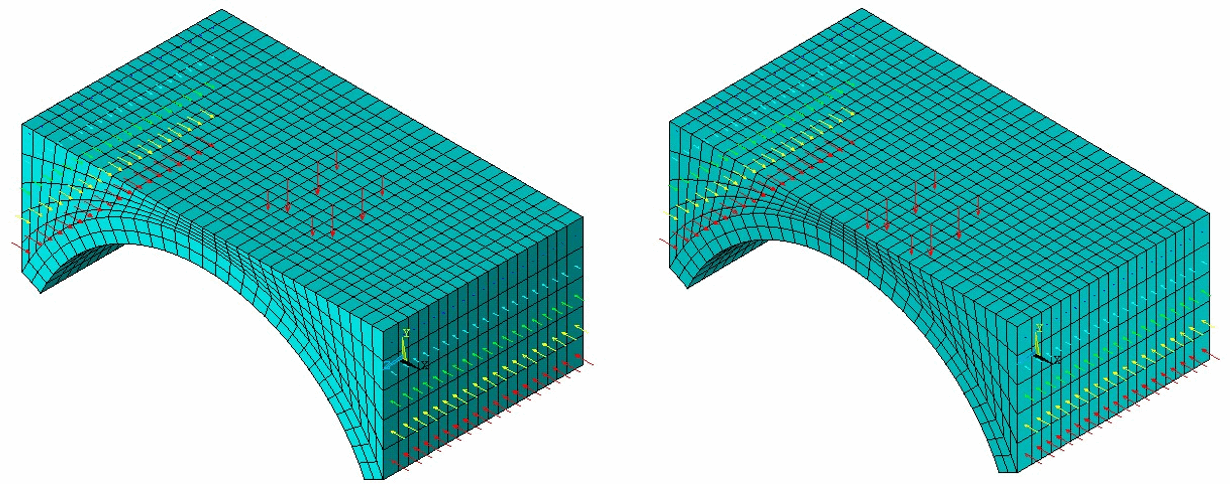Pardeep Kumar 1 and N. M. Bhandari 2
- Senior Lecturer, Dept of Civil Engineering, National Institute of Technology, Hamirpur, (HP), India – 177 005, pkumar@recham.ernet.in
- Professor, Dept of Civil Engineering, Indian Institute of Technology, Roorkee, (UA), India – 247 667, nmbcefce@iitr.ernet.in
ABSTRACT
Masonry arch bridges exist in large numbers in the transport network of many countries. The majority of these bridges were built/designed for carrying loads far less than they are carrying today. Different methods of assessment of these bridges exist. The Finite Element Method (FEM) is extensively used these days in all fields of civil engineering. The use of the FEM in analyzing complex structures like masonry arch bridges has been found to provide good assessments. A two-dimensional Finite Element analysis of masonry arch bridges ignores the transverse effects but the behaviour in the span direction can be effectively modeled. In view of this a masonry arch bridge has been analyzed using a two-dimensional non-linear finite element method computer program that has been developed. A three dimensional nonlinear finite element analysis of the same bridge has been carried out using commercially available general-purpose finite element analysis software, using the inbuilt material models and failure functions. Comparison of the two sets of results indicates the suitability of the two-dimensional analysis for the purpose of load rating. The displacements along the span obtained through a shift in the position of the load in the transverse direction do not significantly vary the magnitudes of the maximum displacements at different locations along the span. A significant variation in the transverse direction was indeed observed. The variation in the transverse direction can seriously affect the carrying capacity of the bridge, if the load is placed on the edge, due to cracking and separation of spandrel walls. The displacements observed under service loads are a lot less than those under collapse loads. Hence for overall assessment, a three-dimensional finite element analysis cannot be ignored, but for a quick load rating a two dimensional finite element analysis is sufficient. The details of the investigation are reported here in the paper.
KEYWORDS: bridge, load carrying capacity, non-linear FEA
8a-1



